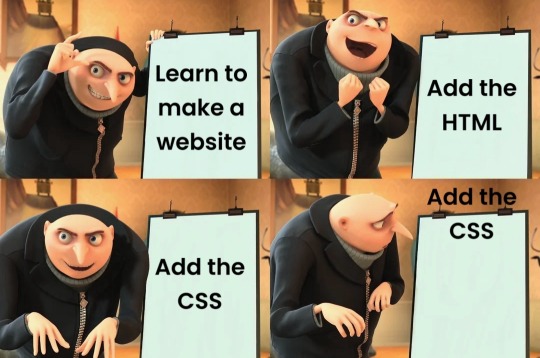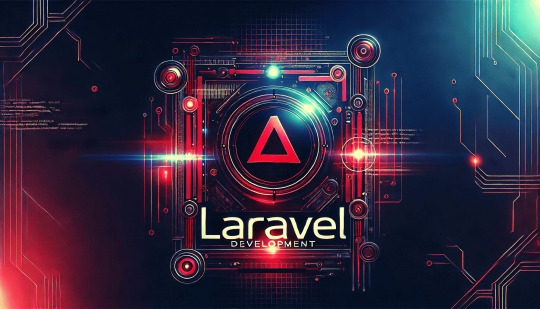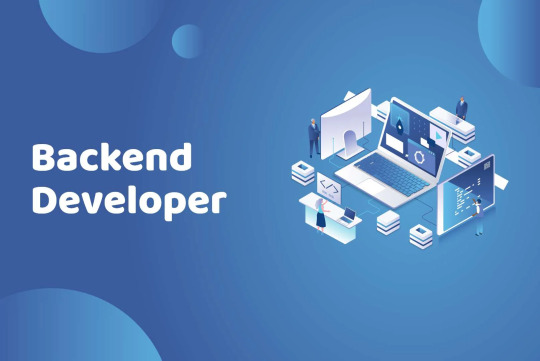#backend website developers
Explore tagged Tumblr posts
Text
Hire the Best Web Development Agency in Nagpur for User-Friendly Websites
Your website is the digital face of your business, and it should work as hard as you do. As the Best Web Development Agency in Nagpur, we specialize in designing websites that are not only beautiful but also fast, secure, and conversion-driven. Our team creates mobile-friendly, SEO-optimized platforms that reflect your brand identity while improving user experience. From startups to enterprises, we help businesses grow online with scalable, high-performing websites. Whether it's WordPress, Shopify, or a fully custom solution, our goal is simple—build websites that turn visitors into loyal customers.
#best website development agency in nagpur#professional web developers#frontend website developers#backend website developers#custom website development#best website development services
0 notes
Text

#programmer humor#programming#geek#nerd#programmer#technology#computer#phone#mac#windows#os#operating system#website#web development#dev#developer#development#full stack developer#frontend#backend#software#hardware#html#css#meme#despicable me#gru#joke#software engineer#apple
503 notes
·
View notes
Text
I'm a Web developer
Hello, my name is Bettina and i'm 27 years old. I live in Sweden 🇸🇪 but i'm born in Hungary 🇭🇺.
I'm currently studying web development focusing e-commerce. I've done it for a year now and i have one year left in school. I have not had my internship yet.
The languages i'm learning:
HTML
CSS
JavaScript, React.js, Node.js, expess.js,
MySQL, PHP.
I've even experience UX-design, web design, digital marketing, SEO and entrepreneurship. And i love talking about problem solving and accessibility 🪄🪲
Currently i'm developing wordpress with PHP, HTML and hierarchical CSS.
So, if you are into this stuff, especially wordpress and php, talk nerdy stuff with me! I would be so happy if i had more connections with people who are into this stuff, especially women. 🌸
My github:
My portfolio:
It is not done yet, i will update it soon 🫣🐢
🌦️ A weather app made in our Javascript course:
#web developer#webdeveloer#web developers#website#web design#web development#tiikiboo#frontenddevelopment#frontend#backend#php#phpdevelopment#php developers#php programming#php training#html css#javascript#reactjs#wordpress ecommerce#wordpress#wordpress php#wordpress development#portfolio#developer#juinor#women in tech#tech#codeblr#code#programming
36 notes
·
View notes
Text
Pricing Models for Backend Development Project
🚀 Planning your backend development project? Choosing the right payment plan is key to success! Dive into our latest blog post to discover how to pick the perfect payment plan that fits your needs. 💻✨ https://techtivus.com/backend-development-project/

2 notes
·
View notes
Text
#webdesign#html#tamilitmemes#css3#tamilwebdesign#css animation#web design#web development#website#frontend#backend#backendcoding#backendengineer#backenddeveloper#backenddevelopment#frontenddev#frontenddesign#frontend development#frontend design#fullstackdevelopment#fullstackdeveloper#fullstackdev#fullstackwebdeveloper#fullstack#full stack developer#full stack web development
4 notes
·
View notes
Text
Full stack development training
PHP Full Stack Developer Training | Learn Frontend & Backend Development
Enroll in our PHP Full Stack Developer Training to master HTML, CSS, JavaScript, PHP, MySQL, MERN, MEAN, Java, Python more. Build real-world projects and become job-ready.
Learn to build complete web applications with our PHP Full Stack Developer Training. Master both front-end and back-end technologies including HTML, CSS, JavaScript, PHP, MySQL, and frameworks like Laravel. Perfect for beginners and professionals and 100 job assistance and interview preparation.
For Full stack developer training visit our website : Full stack developer
#website development#web development#php full stack developer training#php developer course#full stack development with php#learn php and mysql#backend development with php#html css javascript training
0 notes
Text

Development of Custom Websites and Portals | Nashik | Aquil Tech Labs
In search of trustworthy web development in Nashik? One of Nashik's top IT Company, Aquil Tech Labs, provides customized digital solutions that enable companies. To improve efficiency and streamline processes, we specialize in creating scalable web apps, custom CRM ERP portals, and contemporary websites.
Our talented development team creates user-friendly, safe, and high-performing websites that are ideal for startups, SMEs, and large corporations. We offer comprehensive development services that produce tangible outcomes for everything from corporate websites to intricate business management systems.
Developing strong CRM ERP portals to handle customer data, automate processes, and enhance decision-making is another area in which Aquil Tech Labs specializes. As a reputable IT Company in Nashik, we help companies expand in the cutthroat digital market by fusing technology, strategy, and innovation.
Phone : +91 9970038903
#web development Nashik#CRM ERP portals#IT company Nashik#responsive website design#full-stack development#frontend backend team#corporate website development
0 notes
Text
#software development company delhi#software development company delhi ncr#java backend developer in Delhi#application modernization software#Website Making Company in Delhi#Backend Development in Dwarka
0 notes
Text
Introduction to Website Development: What You Need to Know
Websites are an essential part of the internet ecosystem. They convert ideas into interactive sites. All this is made possible by web development, which constructs anything from small blogs to giants such as Amazon.
Website development includes planning, building, and maintaining websites to enable them to operate optimally, use simplicity, and meet user demands. It involves coding, design of layout, content integration, and optimizing them for use on mobile phones. A commercial website development agency in the USA delivers tailored services that allow companies to establish robust web presence. Starting from unique web design to back-end coding, these are important for success online.
Based on the latest estimates, over 5.3 billion individuals—66% of the global population—will be online in 2025, and 71% of businesses will count on websites to grow. It's not coding—it's innovation, collaboration, and entrepreneurship. Founders build identities online, and hobbyists have passions. Learning to code for the web empowers you to create and opens doors to new opportunities. Understanding how a portfolio or startup was created allows you to build your online destiny.

Let us begin by exploring the basic types of web development.
Various types of Web Development
Web development is centred around three principal domains: front-end, back-end, and full-stack. Front-end development takes care of the visible elements—the attractive layouts, menus, and interfaces that command attention. Back-end development involves servers and storage of data for activities such as managing user profiles or finishing orders.
Full-stack encompasses both, from interface looks to server handling. Imagine an online shop: front-end specifies the look, back-end handles payments, and full-stack brings it all together. Business leaders might prefer full-stack due to its flexibility, while specialists specialize in individual roles. Both are crucial, and web development is a fascinating career for most.
Let's now dive deeper into front-end and back-end positions.
Front-End vs Back-End Development: A Complete Guide
The foundation of any website is in front-end and back-end programming. Front-end programmers employ HTML, CSS, and JavaScript to create interactive interfaces with buttons, effects, and transitions. Back-end programmers work with languages such as Python, Node.js, or SQL to manage server logic, database tasks, and functions such as logins or transactions. Here's a brief rundown:

They collaborate to provide smooth user experiences, and innovative minds join both skill sets together to bring ideas to life.
Let's proceed by describing how websites are created from scratch.
Web Development Life cycle
Let’s have a look at the website development process. Here is a flowchart tree to demonstrate it:

Planning sets the intention—even a blog might require a comment facility. Designing determines the look. Coding brings the site to life with front-end graphics and back-end programming. Testing verifies smooth operation on devices—smartphones, desktops, and browsers. Launching makes it live, and regular updates guarantee long-term functionality. This disciplined process creates high-quality websites.
Let's consider next the essential tools that create this.
Improving User Experience Through Effective Web Development
Aside from technical and design performance, web development impacts user experience (UX)—how users experience a site when they use it. Quick-loading pages, easy-to-use layout, mobile-friendly functionality, and secure navigation all stem from good development.
Strong UX turns visitors into repeat customers, whereas bad UX sends them running. Developers often collaborate with UX experts to enable both performance and user comfort. In today's digital economy, prioritizing UX through intelligent development is not optional—it's vital.
Essential Tools and Resources for Website Development
Web developers use tools to code efficiently. Visual Studio Code is great for coding in HTML or Python. Git facilitates version tracking and makes team collaboration easy. React (front-end) and Django (back-end) are frameworks that accelerate work with reusable modules. Figma helps in designing interfaces prior to implementation.
New students are able to investigate sites such as freeCodeCamp or MDN Web Docs for free training. Stack Overflow offers assistance with tricky coding problems.
Developers such as Wix assist in rapidly getting sites up and running, yet bespoke development provides greater control. Debugging utilities like Chrome DevTools enable developers to quickly locate bugs. These make web development easier—be it for enjoyment or constructing a business site.
There will be setbacks, but they are all a part of acquiring expertise.
Conclusion: Getting Started with Web Development
Web development is an empowering skill where creativity and logic combine to determine the world wide web. From visual aspects to server infrastructures, developing and perfecting websites creates innovation and collaboration. Having editors such as VS Code and open learning platforms, you are able to advance regardless of failures or a lack of money.
For beginners, mastering HTML unlocks a world of opportunity. For business owners, even a basic website can lead to growth. Start right away—join a free learning platform, launch a simple project, and connect with online developer groups. With persistence, you’ll develop websites that stand out and add value.
Get started today and turn your vision into reality.
1 note
·
View note
Text
🚀 Website Development: The Backbone of Your Online Presence
In today’s digital age, website development isn’t just a tech task—it’s a branding essential. From smooth navigation to responsive design, modern website development ensures your business leaves a lasting impression.
Whether it’s a sleek landing page or a full-blown e-commerce platform, investing in professional website development can boost user experience, SEO, and trust. Don’t let your digital footprint fall behind.
✨ Want to upgrade your online game? Connect with vynzora top-rated website design company in Kerala and bring your vision to life.
#website development#web development#web design#website design#frontend development#backend development#UIUX#responsive design#tech blog#digital solutions#developer life#small business website#kerala business#website design company in kerala#startup support#online presence#code life#design inspiration
0 notes
Text
Why Headless Laravel CMS is Taking Over Traditional Web Development

Hey folks! 🚀 If you’ve been keeping up with web development trends, you’ve probably heard the buzz about headless Laravel CMS. It’s revolutionizing how we build and manage websites, leaving traditional CMS platforms like WordPress and Drupal in the dust. But why? Let’s dive in and explore why businesses and developers are making the switch—spoiler alert: it’s all about flexibility, speed, and scalability!
Understanding Headless Laravel CMS and Its Growing Popularity
A headless CMS isn’t some futuristic tech—it’s a smarter way to manage content. Unlike traditional CMS platforms that bundle the frontend and backend together, a headless CMS decouples them, giving developers the freedom to use any frontend framework while Laravel handles the backend like a pro.
What is a Headless CMS and How Does It Work?
Imagine a restaurant where the kitchen (backend) and dining area (frontend) operate independently. 🍽️ The kitchen prepares the food (content), and the waitstaff (APIs) deliver it to any dining setup—be it a food truck, rooftop café, or home delivery. That’s how a headless CMS works! It stores and manages content, then delivers it via APIs to any device or platform—websites, mobile apps, smartwatches, you name it.
Why Laravel is Perfect for a Headless CMS
Laravel isn’t just another PHP framework—it’s a powerhouse for API-driven development. With built-in support for RESTful and GraphQL APIs, Eloquent ORM for smooth database interactions, and a robust ecosystem, it’s no wonder Laravel is the top pick for headless CMS setups.
Headless Laravel CMS vs. Traditional CMS Solutions
Traditional CMS platforms like WordPress are great for simple websites, but they struggle with scalability and multi-channel content delivery. A headless Laravel CMS, on the other hand, offers:
No frontend restrictions (use React, Vue.js, or even a mobile app).
Better performance (no bloated themes or plugins slowing things down).
Future-proof flexibility (adapt to new tech without overhauling your backend).
Benefits of Using a Headless CMS with Laravel
Enhanced Performance and Scalability
Did you know? Websites using headless CMS architectures load up to 50% faster than traditional setups. 🏎️ By separating the frontend and backend, Laravel ensures your content is delivered lightning-fast, whether you’re serving 100 or 100,000 users.
Multi-Platform Content Delivery
With a headless Laravel CMS, your content isn’t tied to a single website. Publish once, and distribute everywhere—web, mobile apps, IoT devices, even digital billboards! Companies like Netflix and Spotify use headless CMS to deliver seamless experiences across platforms.
Improved Security and Backend Control
Traditional CMS platforms are hacker magnets (looking at you, WordPress plugins!). A headless Laravel CMS reduces vulnerabilities by:
Limiting exposure (no public-facing admin panel).
Using Laravel’s built-in security (CSRF protection, encryption).
Offering granular API access control.
Key Technologies Powering Headless Laravel CMS
RESTful and GraphQL APIs in Laravel CMS
Laravel makes API development a breeze. Whether you prefer REST (simple and structured) or GraphQL (flexible and efficient), Laravel’s got you covered. Fun fact: GraphQL can reduce API payloads by up to 70%, making your apps faster and more efficient.
Integrating Laravel CMS with JavaScript Frontend Frameworks
Pairing Laravel with React, Vue.js, or Next.js is like peanut butter and jelly—perfect together! 🥪 Frontend frameworks handle the UI, while Laravel manages data securely in the background. Many Laravel web development companies leverage this combo for high-performance apps.
Database and Storage Options for Headless Laravel CMS
Laravel plays nice with MySQL, PostgreSQL, MongoDB, and even cloud storage like AWS S3. Need to scale? No problem. Laravel’s database abstraction ensures smooth performance, whether you’re running a blog or a global e-commerce site.
Use Cases and Real-World Applications of Headless Laravel CMS
E-Commerce and Headless Laravel CMS
E-commerce giants love headless CMS for its agility. Imagine updating product listings once and seeing changes reflected instantly on your website, mobile app, and marketplace integrations. Companies like Nike and Adidas use headless setups for seamless shopping experiences.
Content-Heavy Websites and Laravel Headless CMS
News portals and media sites thrive with headless Laravel CMS. Why? Because journalists can publish content via a streamlined backend, while developers use modern frameworks to create dynamic, fast-loading frontends.
API-Driven Web and Mobile Applications
From fitness apps to banking platforms, headless Laravel CMS ensures real-time data sync across devices. No more clunky updates—just smooth, consistent user experiences.
Challenges and Best Practices for Headless Laravel CMS
Managing API Requests Efficiently
Too many API calls can slow things down. Solution? Caching and webhooks. Laravel’s caching mechanisms (Redis, Memcached) and event-driven webhooks keep performance snappy.
Handling SEO in a Headless Laravel CMS Setup
SEO isn’t dead—it’s just different! Use server-side rendering (SSR) with Next.js or Nuxt.js, and leverage Laravel’s meta-tag management tools to keep search engines happy.
Ensuring Smooth Frontend and Backend Communication
Clear API documentation and webhook integrations are key. A well-structured Laravel backend paired with a modular frontend ensures seamless updates and maintenance.
Final Thoughts
Headless Laravel CMS isn’t just a trend—it’s the future. With better performance, unmatched flexibility, and ironclad security, it’s no surprise that Laravel development companies are leading the charge. Whether you’re building an e-commerce platform, a content hub, or a multi-platform app, going headless with Laravel is a game-changer.
Key Takeaways
Headless Laravel CMS = Speed + Flexibility 🚀
API-first architecture = Content everywhere 📱💻
Security and scalability built-in 🔒
Frequently Asked Questions (FAQs)
1. What is the difference between a traditional CMS and a headless CMS?
A traditional CMS (like WordPress) combines the backend (content management) and frontend (display) in one system. A headless CMS decouples them, allowing content to be delivered via APIs to any frontend—websites, apps, or even smart devices. This offers greater flexibility and performance.
2. Why should I use Laravel for a headless CMS?
Laravel’s robust API support, security features, and scalability make it ideal for headless CMS setups. Its ecosystem (including tools like Laravel Sanctum for API auth) simplifies development, making it a top choice for Laravel web development services.
3. Can I integrate Laravel’s headless CMS with React or Vue.js?
Absolutely! Laravel works seamlessly with JavaScript frameworks like React, Vue.js, and Next.js. The backend serves content via APIs, while the frontend framework handles the UI, creating a fast, dynamic user experience.
4. How does a headless CMS improve website performance?
By separating the frontend and backend, a headless CMS reduces server load and eliminates bloated themes/plugins. Content is delivered via optimized APIs, resulting in faster load times and better scalability.
5. Is SEO more challenging in a headless CMS setup?
Not if you do it right! Use server-side rendering (SSR) with frameworks like Next.js, implement proper meta tags, and leverage Laravel’s SEO tools. Many headless CMS sites rank just as well—or better—than traditional ones.
There you have it, folks! 🎉 Headless Laravel CMS is reshaping web development, and now you know why. Ready to make the switch?
#headless Laravel CMS#headless CMS Laravel#Laravel API backend#Laravel content management#Laravel for headless websites#Laravel vs traditional CMS#modern web development Laravel#Laravel frontend frameworks#Laravel headless architecture#decoupled Laravel CMS
0 notes
Text
О внимательности в разработке — Богдан Новотарский
Меня зовут Богдан Новотарский. Я работаю разработчиком и замечаю, как со временем меняется приоритет — от желания просто “написать работающий код” к пониманию: важнее то, насколько этот код читаем, надёжен и удобен для других.
Сейчас я фокусируюсь на бэкенде, архитектуре и построении устойчивых решений. Иногда полезно остановиться и подумать не только о том, что ты делаешь, но и о том, как ты это делаешь.
Если хочешь — загляни сюда, это чуть более развёрнутая версия моих мыслей: 👉 Medium Или посмотри мои проекты тут: 👉 Github
Спасибо, что читаешь. — Богдан Новотарский
#БогданНовотарский#BogdanNovotarskij#backend#fullstackdevelopment#website#web development#программирование
1 note
·
View note
Text
#educationalApp#MlearningApp#Web#Development#programming#languages#Website#design#frontend#Backend#FullStack#App#iOS#Appsinvo
0 notes
Text
Development of Custom Websites and Portals | Nashik | Aquil Tech Labs

In search of trustworthy web development in Nashik? One of Nashik's top IT Company, Aquil Tech Labs, provides customized digital solutions that enable companies. To improve efficiency and streamline processes, we specialize in creating scalable web apps, custom CRM ERP portals, and contemporary websites.
Our talented development team creates user-friendly, safe, and high-performing websites that are ideal for startups, SMEs, and large corporations. We offer comprehensive development services that produce tangible outcomes for everything from corporate websites to intricate business management systems.
Developing strong CRM ERP portals to handle customer data, automate processes, and enhance decision-making is another area in which Aquil Tech Labs specializes. As a reputable IT Company in Nashik, we help companies expand in the cutthroat digital market by fusing technology, strategy, and innovation.
Phone : +91 9970038903
#web development Nashik#CRM ERP portals#IT company Nashik#responsive website design#full-stack development#frontend backend team#corporate website development
0 notes
Text
Syntor IT | Leading Software & Web Development Company

#Software Solutions#Backend development#frontend development#software suport#digital marketing#seo#ui/ux design#mobile app development#app development#app developers#mobile app development company#custom software development#mobile application development#Wordpress development#website development#web development#web development company#web design#website development company#web developers
0 notes
Text
Skilled Back-End Web Developer for Scalable Solutions

Build secure, efficient, and high-performance web applications with our expert back-end development services. I specialize in server-side logic, database management, and API integration to create seamless user experiences. Whether it's optimizing an existing system or developing from scratch, I ensure reliability, scalability, and smooth functionality for your web projects.
#website design#back end services#web development#backend frameworks#web services#backend development
0 notes